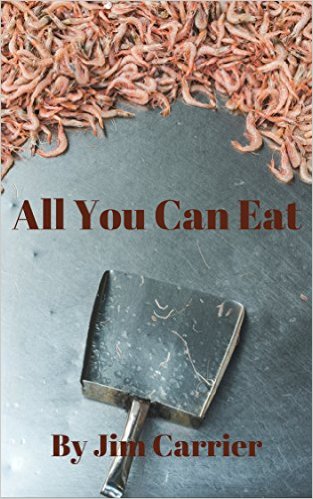Holiday parties, football games, celebrations of any kind sparkle with a big platter of shrimp.
Served on ice with a splash of cocktail sauce and spritz of lemon, there is nothing that exudes luxury and generosity like shrimp. Guaranteed — they will be gone in minutes!
Shrimp — The fruit of the sea.
Guess again.
In this expose and history of the shrimp fishing industry, science reporter Jim Carrier details how shrimp devolved from rare, pricey, hand-caught seafood to an industrial commodity raised in salt water feedlots.
Carved from environmentally sensitive wetlands, filled with antibiotics, pesticides and animal waste, shrimp ponds in poor tropical countries now supply the first world with 90 percent of its shrimp. Fed with ground seafood and grain, these shrimp are packed into shiny cartons by poorly paid, often slave, laborers under conditions that would turn your stomach.
Protests from indigenous fishermen have led to their murders.
Researched for a year along the Gulf and California coasts, underwritten by a grant from the Fund for Investigative Journalism, All You Can Eat is the first attempt to peel back the facade of picturesque shrimp boats seining delicacies from the ocean.
 First published in Orion magazine, and included in Best American Science and Nature Writing 2010, All You Can Eat is updated and revised with Web links and pointers on shopping for shrimp.
First published in Orion magazine, and included in Best American Science and Nature Writing 2010, All You Can Eat is updated and revised with Web links and pointers on shopping for shrimp.
The 5,000-word eBook is available, for $2.99, at Amazon, Barnes & Noble, iBooks, Google Books and Kobo.
Here is a recent investigative report from the Associated Press on the shrimp-packing slave trade.
